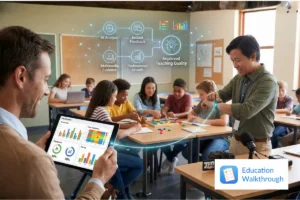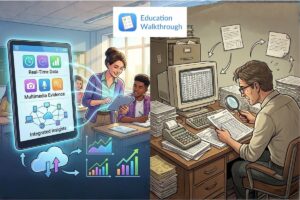When it comes to assessing a teacher’s performance, observations play an important role. By observing a teacher engaging with students, we can collect valuable evidence on multiple levels. Many of these interactions take place in the classroom, but teacher behavior can also be observed in other settings, such as during formal conferences, informal conversations, and while reviewing evidence of practice. This allows us to get a more well-rounded view of the teacher and their effectiveness.
The Ohio Teacher Evaluation System (OTES) 2.0 emphasizes the importance of observations in the evaluation process. There are three types of observations that can be conducted: formal, structured observations; informal, unstructured observations; and walkthroughs. All three types of observations provide important information that can be used to improve teaching and learning in the classroom.
Formal, structured observations are typically conducted by the principal or assistant principal and are announced in advance. They usually last between 30-60 minutes and focus on specific elements of the OTES framework.
In contrast, informal, unstructured observations are less formal and often unscheduled. They provide an opportunity for evaluators to drop into the classroom and get a snapshot of what is happening without interruption. These types of observations usually last between 5-15 minutes.
Walkthroughs are conducted by school leaders as part of their daily routine and typically last no more than 5 minutes. They are a quick way to gather data on instructional practices and climate.
All three types of observations are important and can be used to inform decisions about professional development, coaching, and support for teachers. When considering which type of observation to use, it is important to consider the purpose of the observation and who will be observing. For example, if you want to observe a specific element of the OTES framework, a formal, structured observation would be most appropriate. However, if you are interested in getting a general sense of what is happening in the classroom on a given day, an informal unstructured observation or walkthrough would be more beneficial.
Conclusion
All three types of observations – formal, structured; informal, unstructured; and walkthroughs – provide important information that can help us understand what is happening in the classroom and how we can best support teachers. By considering the purpose of the observation and who will be observing, we can choose the type of observation that will best meet our needs.




